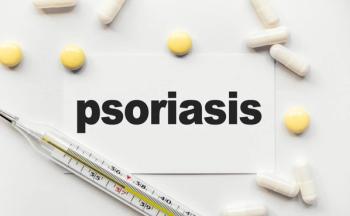
Laser-Assisted Drug Delivery Is Effective in Alopecia but Lacks Comparison With Existing Treatments
Studies show that laser-assisted drug delivery (LADD) improves hair growth in patients with alopecia. However, researchers are still looking at the best ways to compare LADD's effectiveness against other methods like microneedling.
Laser-assisted drug delivery (LADD) produced positive treatment outcomes in patients with alopecia areata (AA) and androgenetic alopecia (AG), but more evidence on laser and energy-assisted drug delivery (LEADD) compared with monotherapy or microneedling-assisted drug delivery is necessary, according to a
LADD can be combined with topical or intralesional therapies to enhance drug delivery and elicit better results in a range of dermatological conditions, but other devices such as radiofrequency microneedling (RFMN) can also be used to improve drug delivery. Therefore, the study authors recommended using the novel term LEADD to encompass the types of energy-based technologies that do not fall within the definition of LADD.
The review gathered data from scholarly publications through a PubMed search observing LEADD and alopecia treatment, remaining focused on human subjects documented in the English language. A total of 18 articles were included, ranging from 2018 to 2022 publication dates. Most research published on LEADD treatment is for patients with AA or AGA, also known as pattern hair loss (PHL), the authors noted.
Minoxidil is often first-line therapy for patients with AGA, and several studies included in the review focused on the efficacy of topical minoxidil combined with LEADD. The review included a split-scalp randomized control study on monthly RFMN with topical minoxidil vs minoxidil alone and found after 5 months, there was a significant increase in hair count (P < .01) and hair thickness (P = .02) in LEADD-treated scalps.
Another split-scalp study analyzed LEADD with non-ablative fractional lasers (NAFL) and topical minoxidil. Results found increased hair density and hair diameter in the LEADD group when compared with monotherapy (P = .001). One study examined improvements throughout all groups treated with LEADD, while another saw benefits in laser (P = .005) or minoxidil (P = .007) monotherapy.
Platelet rich plasma (PRP) in combination with LEADD was evaluated as treatment for AA and AGA in research included in the review. The included trials did not express major differences between groups treated with LEADD, lasers, or PRP. In a retrospective study, patients did not display differences when treated with NAFL monotherapy vs NAFL in combination with PRP at every other session, but all improved with treatment. However, most patients were also on topical minoxidil and oral cosmeceuticals.
Alopecia can also be treated with the combination of topical and intralesional corticosteroids with lasers or energy devices. A study examining both microneedling and AFL followed by triamcinolone acetonide (TAC) showed a statistically significant reduction in severity of alopecia tool (SALT) score (P < .001) in both study groups, but the microneedling group experienced significantly more favorable outcomes (P = .013).
In another study, regrowth scales indicated microneedling was more effective compared with LEADD for drug delivery (P = .023). The combination of LEADD with TAC may be effective for patients with AA, but it is likely the treatment is not superior to microneedling-assisted drug delivery.
Another effective form of combination therapy was AFL with clobetasol and topical clobetasol. LEADD with betamethasone, AFL, and betamethasone all reduced in SALT scores (all P = .005) in one study.
Other types of topical treatments such as growth factors and methotrexate were examined in the review. A common trend was the LEADD groups tended to experience favorable improvements or equal increases in alopecia outcomes compared with growth factors and methotrexate.
One study separated patients into a placebo group and a adipocyte-derived mesenchymal stem cell-conditioned media (ADSC-CM) group, with both receiving NAFL treatment. More improvements were found among the ADSC-CM groups compared with the placebo groups (P < .005). Two case studies showed safety and efficacy with AFL and intralesional methotrexate (MTX), with good responses in the patients treated. Ultimately, growth factors and MTX offer new treatment options for patients who failed intralesional and systemic corticosteroids, according to the authors.
Reviews of various studies found positive treatment outcomes associated with LEADD and emphasized the benefits of patients with AGA when combining LEADD treatment with topical regimens for maximal results.
The study was limited because it failed to include large, high-quality, randomized control trials in relation to LEADD treatment of alopecia. There was also only 1 study included that utilized a placebo because it is difficult to conduct double-blind studies, as it would be challenging to use a sham laser device.
Authors concluded, “Traditional drug modalities can be combined with laser treatments for an augmented effect.” However, they highlighted the need for larger study designs in the future to draw more definitive conclusions.
Reference
Balazic E, Muskat A, Kost Y, et al. The role of laser and energy-assisted drug delivery in the treatment of alopecia. Lasers Med Sci. 2024;39(73)1-13. doi:10.1007/s10103-024-04015-0
Newsletter
Stay ahead of policy, cost, and value—subscribe to AJMC for expert insights at the intersection of clinical care and health economics.







































